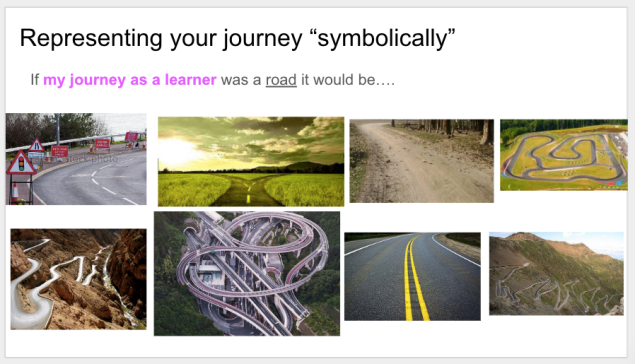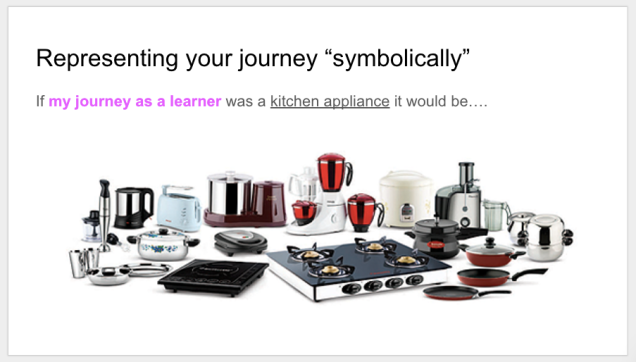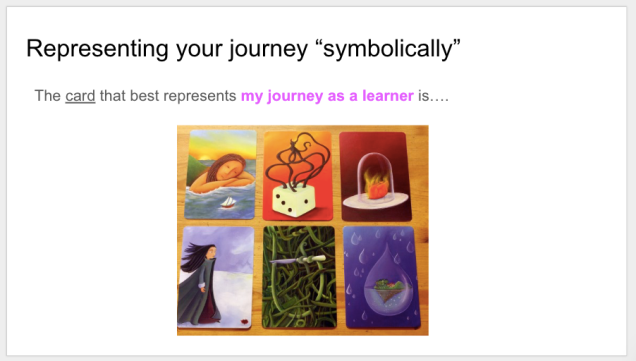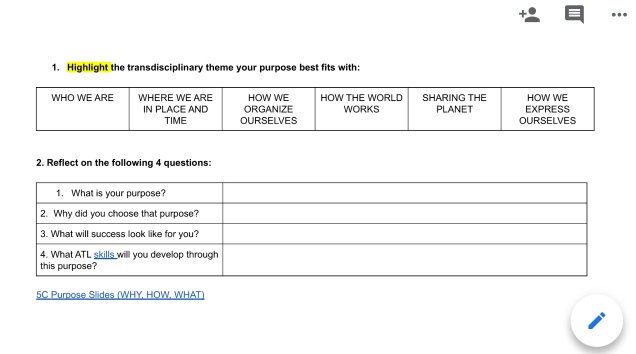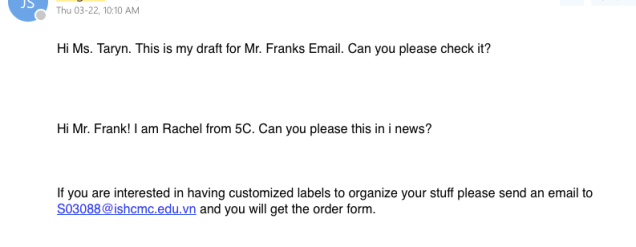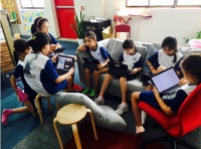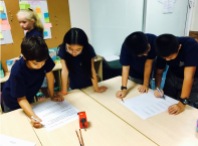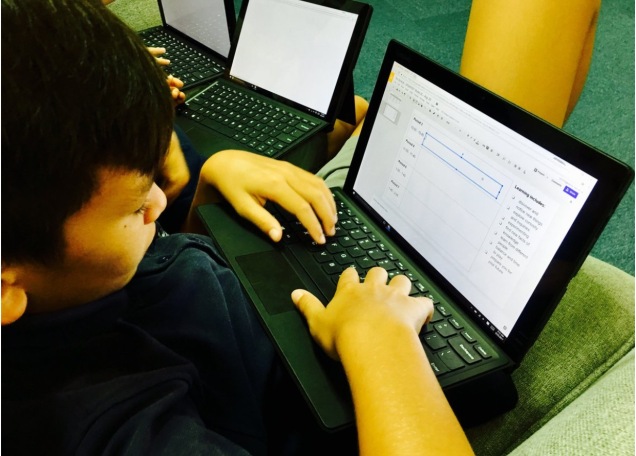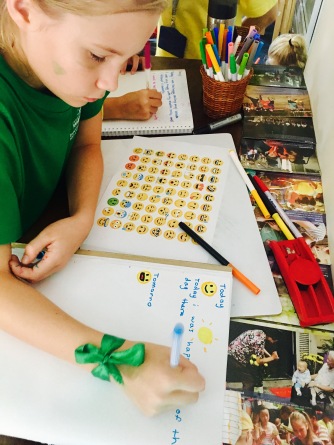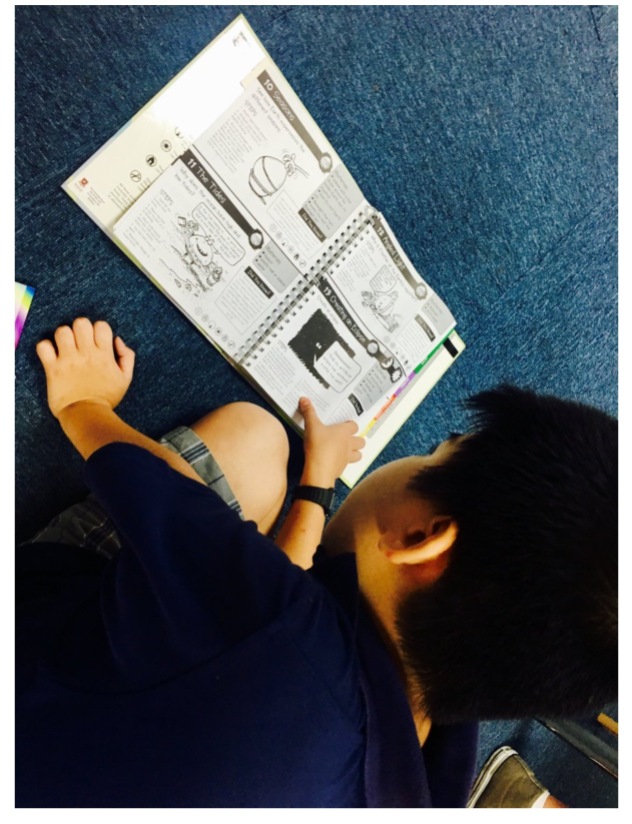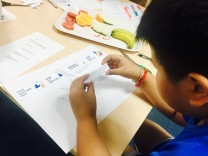Sometimes my team and I get crazy ideas. Like having 120 students share their 120 personalized Units of Inquiry, 8 different ways, 3 days after the winter holiday.
It always seems like a great at the time. We hold hands, jump in with both feet, happily submerge into new waters… then we pop back up to the surface, catch our breath and look around.
What is first excitement, soon becomes panic.
“What were we thinking!?”
“What have we done!?”
“How do we get out of this!?”
Then the realization hits us. The fact that we are constantly asking our students to:
– think big
– take risks
– leave their comfort zone
– do something that scares them
– embrace failure
So in order to avoid being the world’s biggest hypocrites, we commit to our crazy idea, get all hands on deck and continue full steam ahead.
Here is the story of how we muddled through our first attempt at supporting students to “Take Their Learning Public”
As always, the idea came from a long and heated chat. This time, about how to wrap up the students’ first personalized Units of Inquiry. We all agreed, there needed to be some way in which they shared their learning with parents and the school community, but we wanted to ensure it was as authentic and student-driven as possible. So we settled on the idea of having all students “take it public” but in a way that made sense for what their unit was.
As a team, we brainstormed all the possible ways student could take their learning public, and because we’re crazy, we thought… “Why not have them all happening on the same day!?”
And because we’re even crazier, we figured “Why not the Friday after they return from winter holiday”.
So then we introduced the idea to students, as usual starting with the “why”. We talked about how regardless of what someone is working on, learning about, or pursuing, there typically comes a point where that person takes their journey public. It may be when a fashion designer puts on a show. Or when a scientist publishes their findings. Or perhaps when an inventor showcases a prototype at a trade show. Or even when a musician performs a new song.
So since they’ve been working on pursuing a purpose for the past 6 weeks, it was time for them to take their learning public and share it with others.

Then we shared our plan for “how” we were going to help students to make this happen.

We shared our plan for support.

We shared our plan for time.

Then we shared our thinking about “what” ways they could take their learning public. For each option, we shared stories and photos from previous years to help students understand and visualize what that might look like for them – hopefully helping them more of an informed choice when it came time to commit to one of the options.

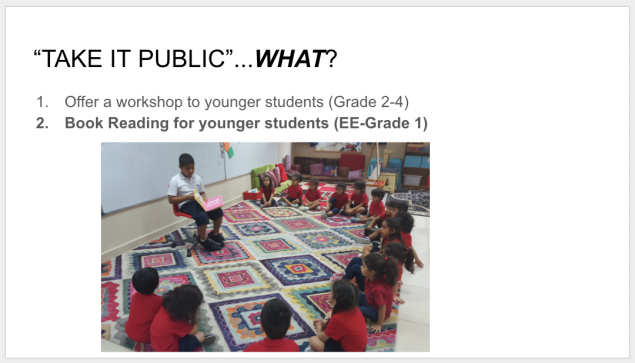




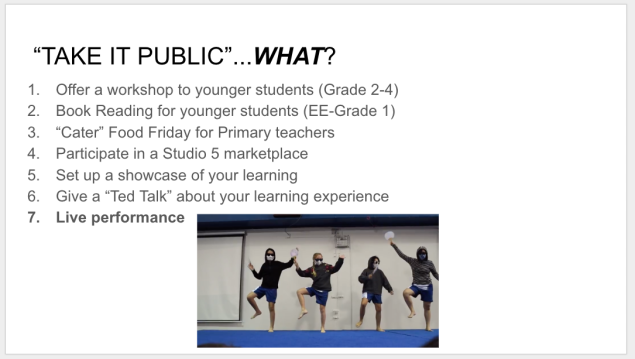


Then we had all student complete a Google Form to give us the data we needed to plan our support for them.


We analyzed the data in order to make decisions about groups and adult allocations. We looked for styles of taking it public that could be grouped together (like Ted Talks and live performances; gallery and showcase) and we also took into consideration our individual strengths and preferences for which group we felt we could best support.

Then we shared this information with students…

and had our first meetings with our “TIP” groups where we able to get to know the students (since they were made of mixed groupings) and begin to co-construct a vision for what success would look like.





These “Take it Public” (or “TIP” as it came to be known) groups would continue to meet at the beginning of each day, so the adult responsible for the group could support the students to create to-do lists and day plans in order to prepare and meet again at the end of each day to support students in reflecting on progress, challenges and next steps. Many advisors also set up TIP Google Classrooms to help with the logistics, organization and communication.
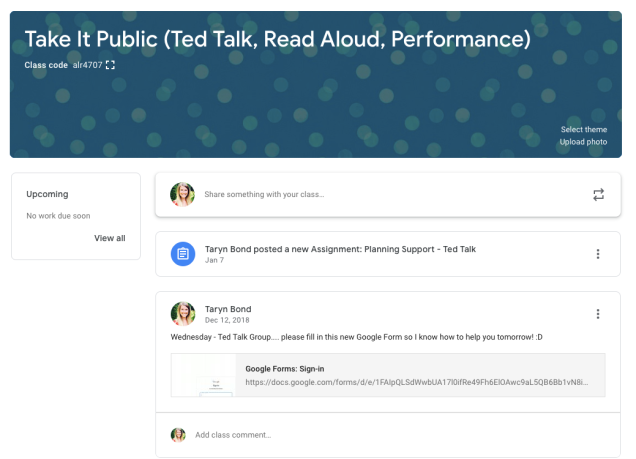
At this point, we also knew it was important to communicate with parents to let them know the “why, how, and whats” of Taking It Public, so they could make arrangement to hopefully come in and be part of it. We decided to be completely transparent with the parent community, and position ourselves as risk-takers, hence the name “A Friday of Firsts” – both for students and ourselves.


Then, the next few days were full of:
Researching…

Building…

Rehearsing…

Designing…

Practicing…

Preparing…

Memorizing…

Organizing…

and lots and LOTS of conferencing!


Many of us used a variety of approaches to track the students’ progress and find out what support they wanted from us. This helped us stay involved with what they needed and the amount and level of support that made sense for them.
Some of us collected this data with small check-in Google Forms at the end of each day:



Others took anecdotal notes, or had one-on-one, regular check-ins with the members of their group.
Regardless of how we collected this data, we all made sure to use it in order to inform our planning for the following day.

We also paid attention to planning the logistics for the actual day. Taking into consideration what is happening when, who is involved, who is supervising whom and who is available to come an observe/participate.

The morning of the event, students did their final touches and preparations…




And then…. ready, set, GO!
Ted Talks


Live Performances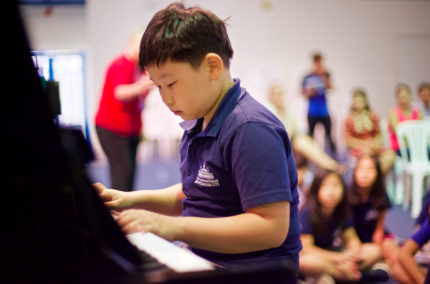
A Marketplace




A showcase 



A gallery


A catered “Food Friday”

Workshops for younger students


And read alouds

Photo credits: @puglifevn @juouelle @hktans @ms_amandaromano
Reflections:
- All in all it was a successful day – there was a palpable energy amongst students, advisors and the parent community, as well as feelings of pride, success and accomplishment
- There were a few difficult conversations between parents and students, but we welcome and encourage that as part of the learning process from students first attempt planning and directing their own Unit of Inquiry – it’s all about failing forward and learning from mistakes
- As a team, we were glad we took the plunge and tried something new and scary – we left our comfort zone, and magic really did happen!
- It was SO great to work with a mixed group of students and continue to build relationships with students across the grade level
- It was surprising how smooth the transition was from winter holiday, right back into TIP preparations – we were shocked and provoked at the idea not necessarily needing to wrap up one thing before a break, and the unexpected benefits of having something familiar to jump right back into
Future Thoughts:
- next time it would be great for us to acknowledge the students that “took it public” on their own accord at some point throughout their unit, as we had a few students point out that they had already hosted a workshop, catered an event, participated in a market at a more authentic time in their journey. Maybe this teacher-led “take it public” does not need to be for everyone, but could be more for those students who missed this part of the process on their own
- it would be great if we could figure out how to break this “taking it public” out of school-land, beyond parents and students, and support students to share their learning and accomplishments with the wider community
How do you support your students to have ownership over taking their learning public?
How do you model and experience taking risks and facing failures alongside your students?




